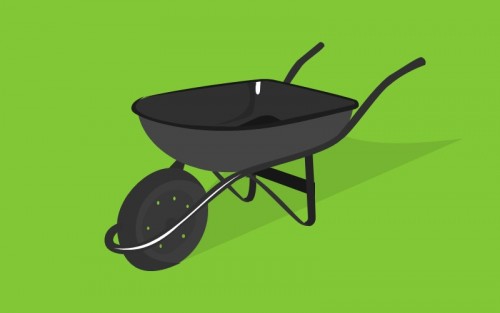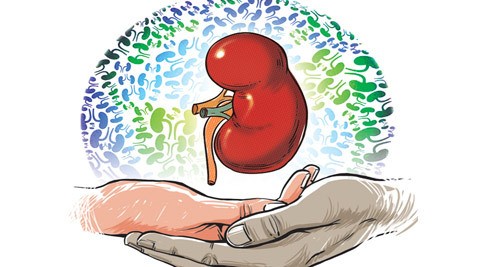7 ways to help children in need
Poor children. How can the life of a poor child be improved? Access to health and school are essential to their future. Child poverty in America is higher than that of other rich nations. How to find solutions to help children in need? Anyone can do something. In this post, you will learn how to donate to children and view a list of children’s charities that might be helpful.
Why we are talking about donating to children?
Throughout the US, there are still children in need of schools, health care and other social services, which are crucial so that they can develop their own potential and live more dignified lives.
Charities that help children contribute in transforming the reality of innumerable families. Donating to organizations are often the most efficient way to support children in need since they are prepared to make the most out of limited resources.
How to donate to children in need: children’s charities near me
If you care about children in need, there are many ways you can help. Volunteer at local children’s charities, organize a fundraiser or consider making a donation.
A quick search on the internet for charitable organizations for children and chances are you will find a donation website that features a list of children’s charities.
Data analysis: the situation of children and adolescents
According to the US Census Bureau, there are over 73 million children (ages 0-17) in the United States, whose wellbeing depends on the economic circumstances and purchasing power of their families.
To illustrate the urgency of the theme, we listed a few statistics below:
- About 10% of children living with their parents are in poverty, compared to 43% from families with divorced parents. In Hispanic families, the numbers reach almost 50% of poor children living in families with divorced parents;
- The percentage of children living in families in extreme poverty (with income less than half the poverty line) is 9%, or around 6,624,000 children living in harsh conditions;
- Over 13 million kids (18% of all children) live in food insecure families, of which 27% are black and 24% of Hispanic origin;
- The percentage of children without a health plan is 5%, which means that almost 4 million children do not have any type of medical coverage.
Child mortality: what can donating to children do?
You know, poor children are less likely to live dignified lives. Donating to children therefore becomes critical to the survival of children in need. When resources are lacking and there is no support, it becomes much more difficult for infants and young children from low-income families.
The infant mortality figures from the most recent United Nations Development Program (UNDP) report are not very good. The indicators place the United States in 44th position worldwide in relation to infant mortality prevention, with a rate of 5.6 deaths per thousand live births. The United States is surpassed by countries like Cuba, Bosnia and Croatia.
| # | Country | Infant mortality rate per 1,000 live births | |
|---|---|---|---|
| Images: flaticon | |||
| 1 | Luxembourg | 1,50 | |
| 2 | Iceland | 1,60 | |
| 3 | Finland | 1,90 | |
| 4 | Japan | 2,00 | |
| 5 | Norway | 2,00 | |
| 6 | Andorra | 2,10 | |
| 7 | Singapore | 2,10 | |
| 8 | Slovenia | 2,10 | |
| 9 | Estonia | 2,30 | |
| 10 | Sweden | 2,40 | |
| 11 | Cyprus | 2,50 | |
| 12 | San Marino | 2,60 | |
| 13 | Czech Republic | 2,80 | |
| 14 | Monaco | 2,80 | |
| 15 | Austria | 2,90 | |
| 16 | Denmark | 2,90 | |
| 17 | Italy | 2,90 | |
| 18 | Korea (Republic of) | 2,90 | |
| 19 | Australia | 3,00 | |
| 20 | Ireland | 3,00 | |
| 21 | Portugal | 3,00 | |
| 22 | Germany | 3,10 | |
| 23 | Israel | 3,20 | |
| 24 | Netherlands | 3,20 | |
| 25 | Belgium | 3,30 | |
| 26 | Lithuania | 3,30 | |
| 27 | Belarus | 3,40 | |
| 28 | Switzerland | 3,40 | |
| 29 | France | 3,50 | |
| 30 | Spain | 3,50 | |
| 31 | United Kingdom | 3,50 | |
| 32 | Croatia | 3,60 | |
| 33 | Greece | 3,60 | |
| 34 | Cuba | 4,00 | |
| 35 | Canada | 4,30 | |
| 36 | Montenegro | 4,30 | |
| 37 | Poland | 4,50 | |
| 38 | New Zealand | 4,70 | |
| 39 | The former Yugoslav Republic of Macedonia | 4,80 | |
| 40 | Bosnia and Herzegovina | 5,10 | |
| 41 | Malta | 5,10 | |
| 42 | Bahrain | 5,30 | |
| 43 | Hungary | 5,30 | |
| 44 | United States | 5,60 |
When it comes to comparing infant mortality rates among African-Americans, they are quite similar to the Republic of Togo in Africa and the island of Granada, located in the Caribbean.
Poverty: potentialization of dangers
The only way to help is by donating to children. There are many charitable organizations for children in need that need donations to keep their doors open. There is a lot of work to be done.
In another study, conducted by the United Nations Children’s Fund (UNICEF) in 2012, child poverty indicators put the United States in second last place among 35 advanced economies.
| # | Country | Infant mortality rate per 1,000 live births | |
|---|---|---|---|
| Images: flaticon | |||
| 1 | Iceland | 4,7 | |
| 2 | Finland | 5,3 | |
| 3 | Cyprus | 6,1 | |
| 4 | Netherlands | 6,1 | |
| 5 | Norway | 6,1 | |
| 6 | Slovenia | 6,3 | |
| 7 | Denmark | 6,5 | |
| 8 | Sweden | 7,3 | |
| 9 | Austria | 7,3 | |
| 10 | Czech Republic | 7,4 | |
| 11 | Switzerland | 8,1 | |
| 12 | Ireland | 8,4 | |
| 13 | Germany | 8,5 | |
| 14 | France | 8,8 | |
| 15 | Malta | 8,9 | |
| 16 | Belgium | 10,2 | |
| 17 | Hungary | 10,3 | |
| 18 | Australia | 10,9 | |
| 19 | Slovakia | 11,2 | |
| 20 | New Zealand | 11,7 | |
| 21 | Estonia | 11,9 | |
| 22 | United Kingdom | 12,1 | |
| 23 | Luxembourg | 12,3 | |
| 24 | Canada | 13,3 | |
| 25 | Poland | 14,5 | |
| 26 | Portugal | 14,7 | |
| 27 | Japan | 14,9 | |
| 28 | Lithuania | 15,4 | |
| 29 | Italy | 15,9 | |
| 30 | Greece | 16 | |
| 31 | Spain | 17,1 |
Ahead of only Romania in the published survey, more than 23% of American children live in families with income less than half the national average.
That’s why your donation to children is essential. Continue reading this post to find out which charities are the best to donate to children in need.
Violence: how to survive in no man’s land
In poor communities, whose residents are mostly African-Americans and Hispanics, violence and death rates are extremely high. The ease with which crime, drugs and juvenile delinquency penetrate these neighborhoods are capable of producing distortions, even in life expectancy rates.
For example, in Baltimore, the Roland Park and Hollins Market neighborhoods are only six miles apart, although there is an almost 20-year difference in life expectancy. In another poor neighborhood, Sandtown-Winchester, life expectancy does not reach 70 years, with a similar number to that of Iraq, where until a short time ago young Americans were also dying.
In the midst of all this, children are not able to dream the future that would be natural — college, employment, home, etc. —, because they do not know if the future will reach them. Poverty, violence and loss become normal for them. But you and I know that it’s not normal.
Black mirror: the reflection of a society that has learned to hate
It’s not just today that the question of race presents great problems. The fear of being discriminated against for the color of one’s skin or ancestral origin becomes a torment every time a black child or young black man observes his reflection in the mirror.
The more lacking the resources, the more segregated they become. Injustice, therefore, becomes something normal, present daily in the newspapers but also on the streets.
How to explain that black Americans are 8 times more likely to die from firearms than whites? And it is not enough to just discuss the racial question, because beyond that there is the social question, which removes children and young people from resources and often leads them to jail.
Being a child in a poor American neighborhood
The first 16 years of a person’s life can be determinant in the income he or she will gain for many decades afterwards. This was demonstrated by researchers Douglas Massey from Princeton University and Jonathan Rothwell of the Brookings Institute.
Even if a person changes residence various times after completing this age, the experiences lived at the place of birth are perpetuated. Indicators show that an American refrains from earning about US$ 900,000 if he or she lives in a poor neighborhood, compared to what a person who lives in a wealthy neighborhood receives.
This is because in poorer neighborhoods, with the trend towards higher rates of social disorder and violence, social deprivation can result in poor attendance at low quality schools and greater removal from good job opportunities.
Charitable organizations for children: donate to children on charity websites
#1 Children International
Develops long-term work with children so they can interrupt the entire cycle of poverty that surrounds them.
#2 Covenant House
Helps transform and save the lives of children who have fled or been evicted from home or even trafficked.
#3 LGW
Conducts educational and socioeducational programs for children in low-income communities, combating poverty and offering better opportunities.
#4 Save the children
Offers children a healthy start in life, the opportunity to learn and protection against risks.
#5 St. Jude Children's Research Hospital
Helps the world understand, treat and defeat childhood cancer and other life-threatening diseases.
#6 Unicef
Works around the world to protect the rights of children and improve their lives and those of their families.
#7 Wigs for kids
Supports children who have lost hair due to chemo and radiotherapy, alopecia, trichotillomania, burns and for other reasons.
To donate to the Legion of Good Will, click below:




